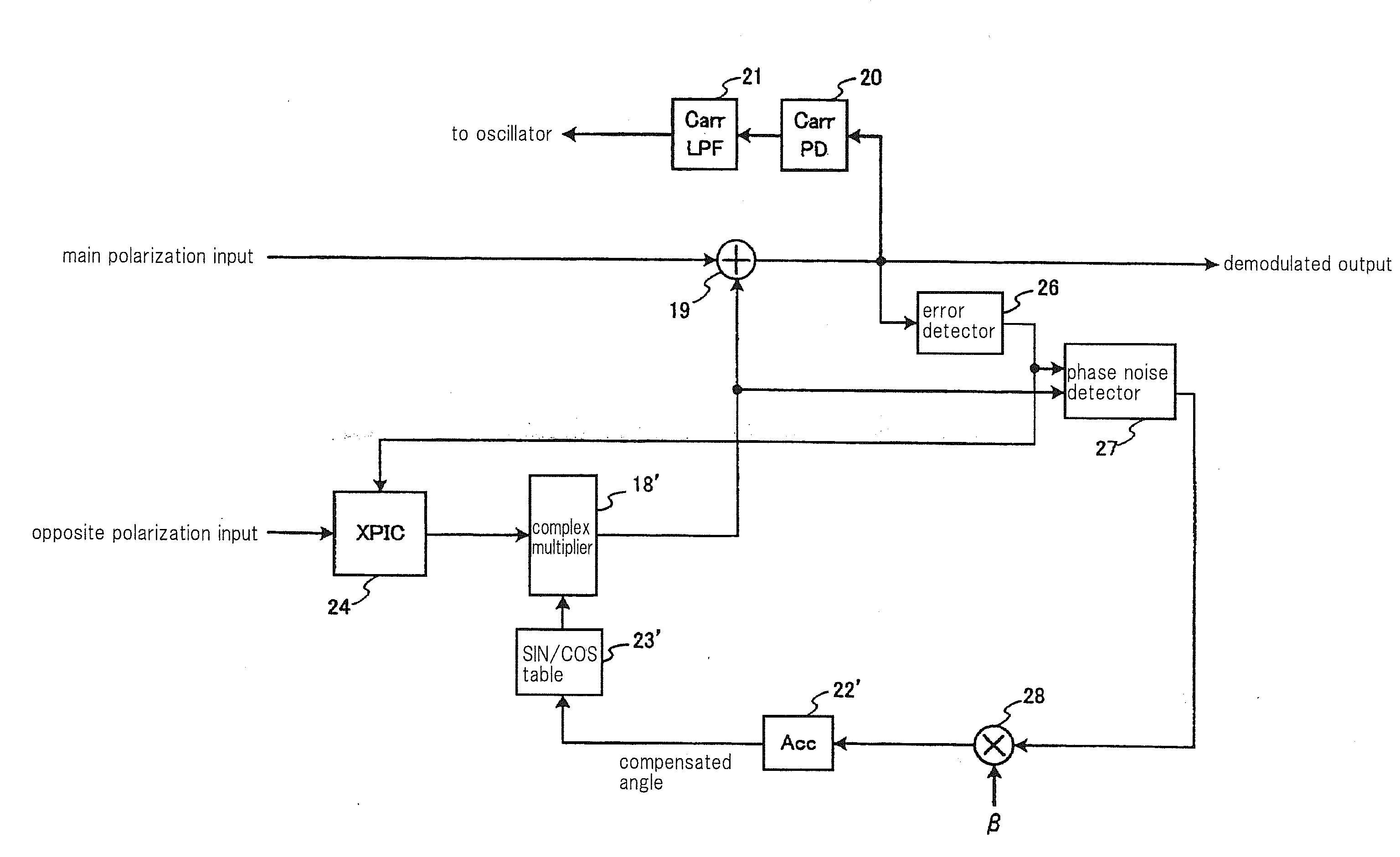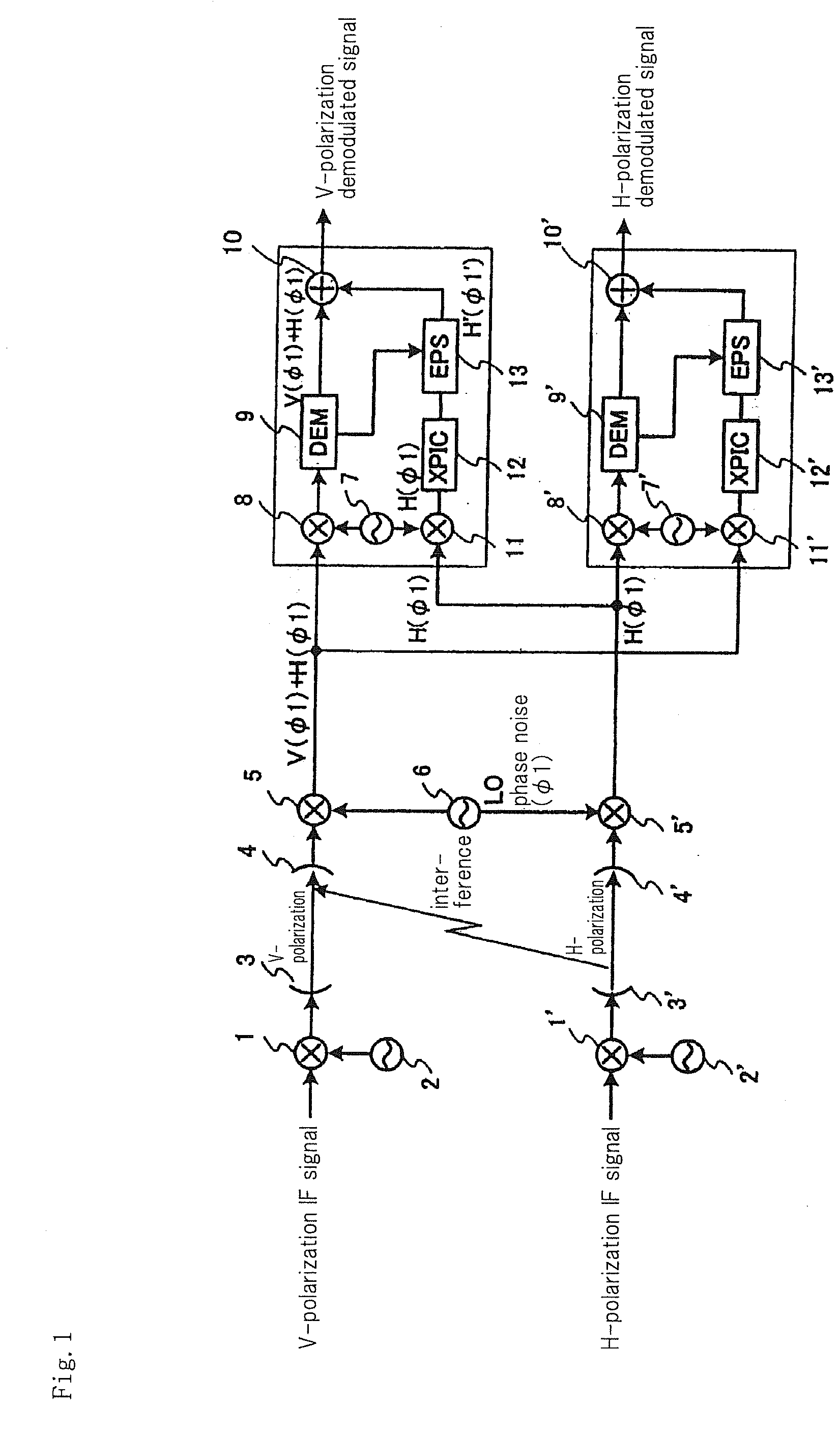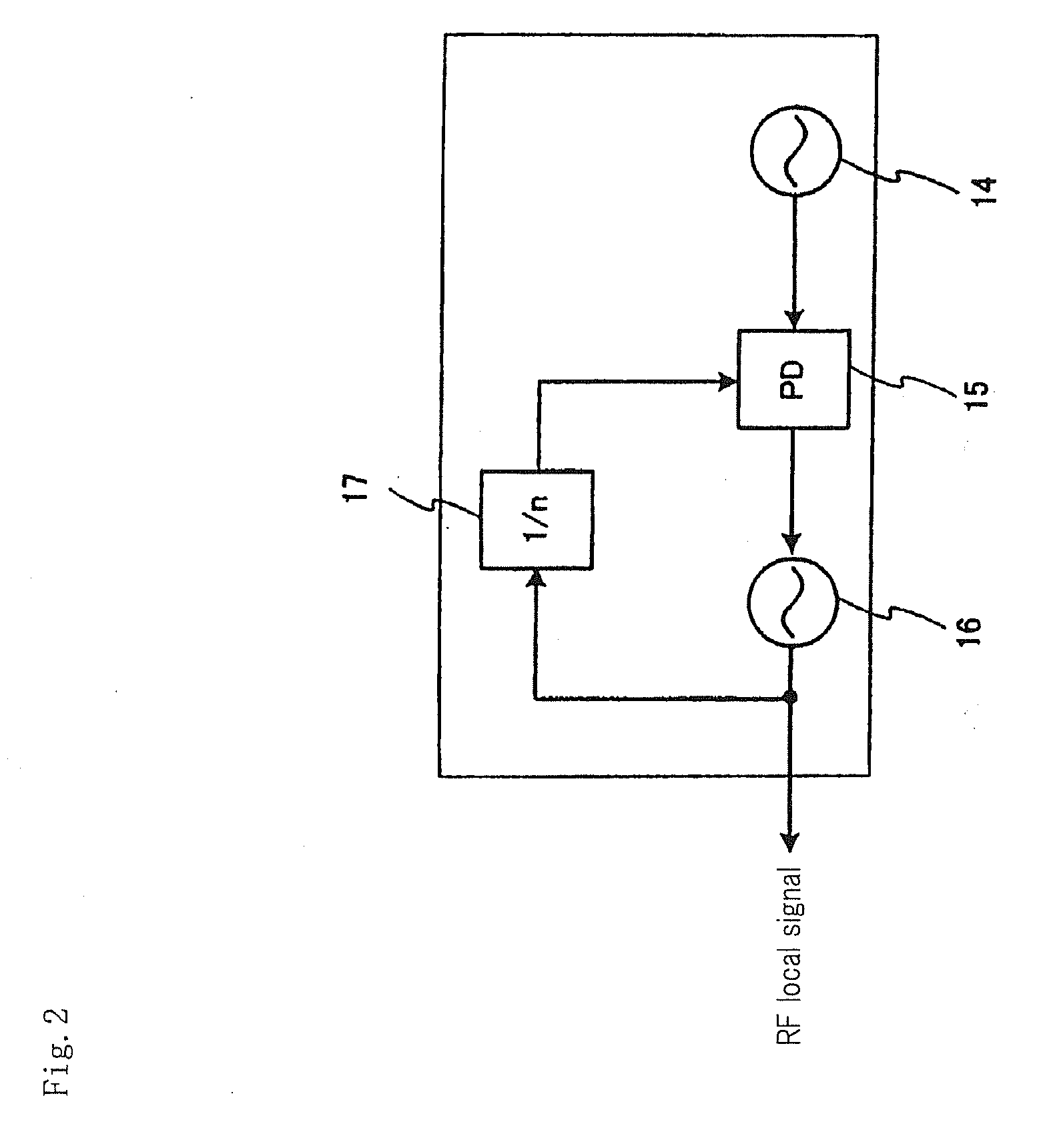Cross polarization interference canceling method and cross polarization interference canceling apparatus
a technology of interference canceling and cross polarization, applied in pulse manipulation, pulse technique, depolarization effect reduction, etc., can solve the problems of reducing and reducing the reliability of communication paths, so as to reduce reduce the time constant of xpic correspondingly greater, control can be made small, and the effect of reducing the influence of phase nois
- Summary
- Abstract
- Description
- Claims
- Application Information
AI Technical Summary
Benefits of technology
Problems solved by technology
Method used
Image
Examples
first exemplary embodiment
The First Exemplary Embodiment
[0078]A cross polarization interference canceling apparatus of the first exemplary embodiment of the present invention will be described. FIG. 7 is a block diagram showing an essential part of a cross polarization interference canceling apparatus of the first exemplary embodiment, in which the portion downstream of the outputs from orthogonal demodulators 8 and 11 shown in FIG. 4 is shown. The configuration upstream of orthogonal demodulators 8 and 11 is that shown in FIG. 4. The blocks allotted with the same reference numerals as in the conventional example shown in FIG. 3 have the same functions except that input control signals are partly different.
[0079]First, connection for signal transmission between the components shown in FIG. 7 will be described.
[0080]As shown in FIG. 7, the output side of complex multiplier 18 is connected to adder 19. Connected to the output side of adder 19 is a signal line for transmitting demodulated signals. Carrier phase...
second exemplary embodiment
The Second Exemplary Embodiment
[0113]A cross polarization interference canceling apparatus of the second exemplary embodiment of the present invention will be described. FIG. 11 is a block diagram showing a cross polarization interference canceling apparatus of the second exemplary embodiment of the present invention. The above first exemplary embodiment uses a method of adding the XPIC signal after establishment of carrier synchronization. The second exemplary embodiment, however, uses a method of adding the XPIC signal before establishing carrier synchronization.
[0114]In the present exemplary embodiment, since complex multiplier 18′ at the XPIC 24 output needs to simply correct only the phase difference caused by the influence of the phase noise, the configuration can be correspondingly simplified. Compared to the first exemplary embodiment, the configuration for adding the output from accumulator 22 and the output from accumulator 22′ is omitted as shown in FIG. 11.
[0115]Here, th...
third exemplary embodiment
The Third Exemplary Embodiment
[0116]A cross polarization interference canceling apparatus of the third exemplary embodiment of the present invention will be described. FIG. 12 is a block diagram showing a cross polarization interference canceling apparatus of the third exemplary embodiment of the present invention. The present exemplary embodiment has a configuration in which the complex multiplier 18′ in the second exemplary embodiment is disposed on the input side of XPIC 24. That is, phase compensation can also be performed by changing the phase of the input signal to XPIC 24. In this case, complex multiplier 18′ is arranged before XPIC 24 as shown in FIG. 12.
[0117]FIG. 13 is a flow chart for summarizing the operational sequence of the cross polarization interference canceling method in the present exemplary embodiment. As shown in FIG. 13, error detector 26 determines the error signal that indicates the difference between the demodulated signal and the ideal received signal of t...
PUM
 Login to View More
Login to View More Abstract
Description
Claims
Application Information
 Login to View More
Login to View More - R&D
- Intellectual Property
- Life Sciences
- Materials
- Tech Scout
- Unparalleled Data Quality
- Higher Quality Content
- 60% Fewer Hallucinations
Browse by: Latest US Patents, China's latest patents, Technical Efficacy Thesaurus, Application Domain, Technology Topic, Popular Technical Reports.
© 2025 PatSnap. All rights reserved.Legal|Privacy policy|Modern Slavery Act Transparency Statement|Sitemap|About US| Contact US: help@patsnap.com



